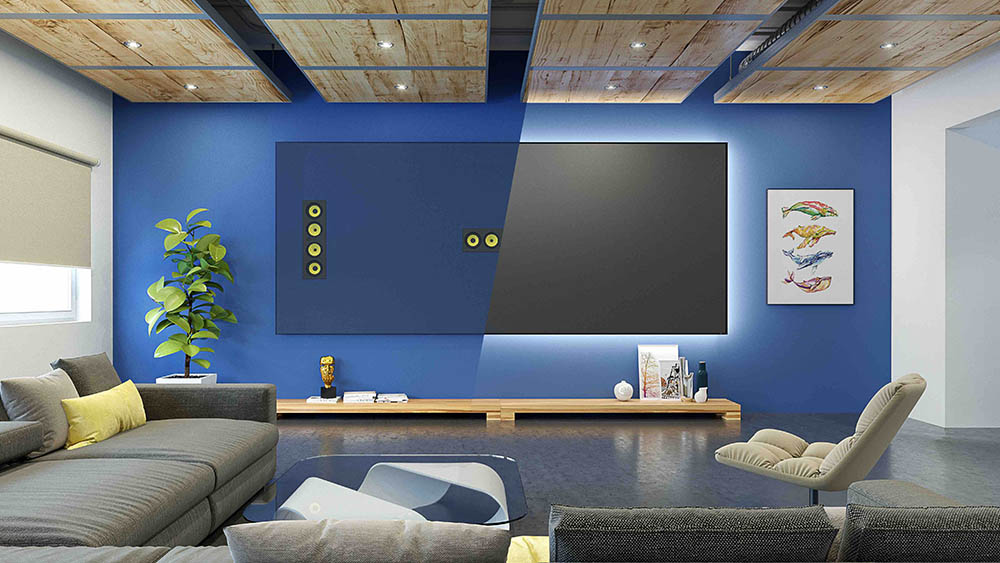The What: Since launching in 2014, Screen Innovations’ Slate ambient light-rejecting projection screens have been a driving force for the company. Building on this success, the company has introduced acoustically transparent perforated versions its Slate and Pure screens, the Slate AT and Pure AT.
The What Else: Slate AT has been a long-term SI goal based on its vision that the screen should not be a distraction for the viewer, instead adding to or improving their experience.
“We created Slate AT and Pure AT to give our customers the best of both worlds: the best picture and the best sound,” said Ryan Gustafson, CEO of SI. “Pure and Slate have solved the problem of image quality with the sharpest image reproduction in the market by managing the texture pattern down to nine times finer than standard white or gray materials, maintaining image uniformity. Merging Slate and Pure with our acoustic perforation technology has truly created the best of both worlds, picture and sound. Imagine hiding your favorite LCR speakers behind a massive Zero Edge screen with our popular Backlighting, even with the lights on thanks to Slate’s ALR properties.”
According to Tom Nugent, SI’s chief of technology, who led the project, developing a perforated material was an arduous process. “It has not been easy,” he said. “Perforating is difficult in its own right, but working with a 106-inch-tall material is nearly impossible. We are perforating over 28,000 0.55mm holes for every square foot, clearly a daunting task.
“The effect of the perforated screen has very little attenuation starting at about 1-2kHz. Typical impact on frequency response is well within the -3db range with a peak attenuation of -6db at 20kHz. This difference is easily corrected by most modern receivers with room correction. Additionally, many architectural speakers feature a treble compensation switch to adjust for this type of installation.”
The Bottom Line: Slate AT and Pure AT screens are available to order now and can be configured on all the company’s screen form factors such as Zero Edge, Zero-G, Fixed, and Motorized.










